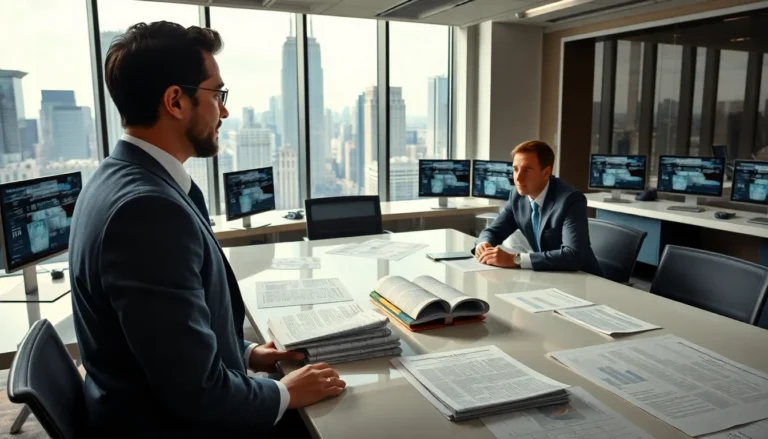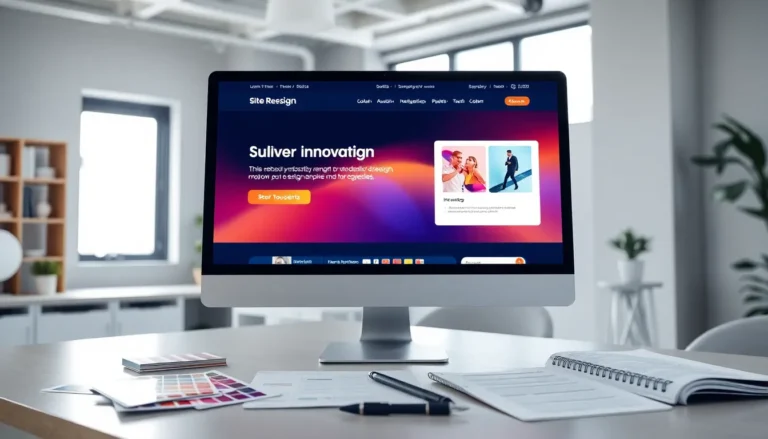Table of Contents
ToggleIn a world where beauty is more than skin deep, packaging is the unsung hero that often steals the spotlight. Gone are the days of plain, boring containers. Today’s beauty packaging trends are all about making a statement, turning heads, and maybe even sparking a little envy on social media. Think eco-friendly materials that whisper sweet nothings to Mother Earth while dazzling consumers with eye-catching designs.
Overview of Beauty Packaging Trends
Evolving aesthetics define the current landscape of beauty packaging. Brands prioritize more than functionality; they emphasize unique designs that resonate with consumers. Many companies embrace bold colors and intricate shapes, enhancing visual appeal on social media.
Sustainability increasingly influences packaging choices. Eco-friendly materials such as recycled plastics and biodegradable options attract environmentally conscious shoppers. Up to 60% of consumers express a desire for sustainable packaging solutions.
Minimalism also plays a significant role in current trends. Clean lines and simple designs convey elegance and sophistication. Brands are capitalizing on this by creating a streamlined look that highlights product quality.
Personalization trends are on the rise, with many companies offering customized packaging options. Unique designs enable brands to connect with their audience on a more personal level. Collaborative projects between brands and artists further enhance this trend.
Lastly, multifunctional packaging is gaining traction. Beauty products designed for dual uses, such as skincare that doubles as makeup, simplify consumer choices. This trend not only saves space but also reduces waste by eliminating the need for multiple products.
The interplay of these trends shapes the future of beauty packaging, creating a dynamic environment that satisfies diverse consumer preferences.
Sustainable Packaging Solutions
Sustainable packaging solutions are reshaping the beauty industry. Brands increasingly prioritize eco-friendly options that appeal to environmentally conscious consumers.
Biodegradable Materials
Biodegradable materials play a crucial role in sustainable packaging. These options decompose naturally, minimizing landfill waste. Many brands now use plant-based plastics made from cornstarch or sugarcane. This shift caters to up to 60% of consumers who prefer eco-friendly materials over traditional plastics. Eco-certifications further enhance the credibility of biodegradable packaging, drawing in consumers seeking sustainability. Choosing biodegradable options reflects a commitment to environmental responsibility.
Reusable Containers
Reusable containers represent another step towards sustainability in beauty packaging. These containers allow consumers to refill and reuse, significantly reducing waste. Many brands offer incentives like discounts for returned containers, promoting a circular economy. Aesthetic designs complement functionality, encouraging consumers to keep and showcase their containers. The trend of reusable packaging aligns with consumer preferences for eco-conscious choices while maintaining elegance. By focusing on this aspect, brands create a lasting relationship with environmentally aware customers.
Innovative Designs in Beauty Packaging
The beauty packaging landscape continually evolves, featuring innovative designs that captivate consumers. Brands adopt various strategies, focusing on aesthetics and functionality while addressing sustainability.
Minimalist Aesthetics
Minimalism captures attention with clean lines and understated elegance. Brands embrace simplicity, emphasizing high-quality materials over excessive embellishments. This approach resonates with consumers valuing sophistication but not clutter. Moreover, 50% of consumers prefer minimalistic packaging that enhances product appeal on social media platforms. Strong typography and earth-toned colors further contribute to a refined look. The result is packaging that prioritizes simplicity, allowing the product to shine without distractions.
Functional Packaging
Functional packaging enhances usability and convenience, meeting the demands of modern consumers. Refillable containers are gaining popularity, promoting waste reduction and sustainability. Many brands implement incentive programs, offering discounts for returning empty containers. Additionally, multifunctional designs combine products, simplifying choices for consumers while saving space. As 70% of consumers prioritize functionality, this trend emphasizes performance alongside aesthetics. Engaging packaging features intuitive dispensers and portable designs that cater to on-the-go lifestyles, demonstrating a commitment to practical solutions.
Technological Advancements in Packaging
Technological advancements in beauty packaging are revolutionizing the industry. Innovative solutions enhance product experience and sustainability.
Smart Packaging Features
Smart packaging utilizes technology to improve functionality. Brands increasingly incorporate QR codes that link to product information, tutorials, and promotions. These elements educate consumers and add value. Temperature-sensitive labels alert users if the product is being stored improperly. Additionally, RFID tags facilitate inventory management, streamlining operations for retailers. The interplay of technology and design creates an interactive experience, engaging consumers in unprecedented ways.
Eco-Friendly Ink and Coatings
Eco-friendly ink and coatings significantly impact sustainability. Many beauty brands now opt for vegetable-based inks, which are less harmful to the environment compared to traditional petroleum-based options. Biodegradable coatings protect products while ensuring minimal environmental impact. Furthermore, brands emphasize the use of water-based coatings that reduce volatile organic compounds (VOCs), benefiting both the environment and consumer health. Innovations in sustainable inks enhance aesthetics without compromising performance. This commitment to eco-friendly materials reflects growing consumer demand for responsible packaging solutions.
Consumer Preferences and Trends
Current consumer preferences drive beauty packaging trends, focusing on aesthetics, sustainability, and functionality. Brands respond with innovative designs that capture attention on social media.
Impact of Social Media
Social media significantly influences beauty packaging decisions, as brands aim to create visually striking products. An emphasis on bold colors and intricate shapes encourages consumers to showcase their purchases online. Up to 70% of consumers report that eye-catching packaging impacts their purchasing choices. Packaging designed for social sharing enhances engagement and brand loyalty, as consumers look for products that stand out in their feeds.
Customization and Personalization
Customization and personalization reshape beauty packaging, allowing brands to connect with consumers on a deeper level. Customers appreciate packaging that reflects their individuality, with many brands offering tailored designs or limited editions. An increase in personalized packaging has been observed, with over 60% of consumers expressing interest in unique products that resonate with their styles. Collaborations with artists and influencers further enhance this appeal, creating a sense of exclusivity that attracts buyer attention and support.
The beauty packaging landscape is rapidly transforming to meet the demands of today’s consumers. With a strong focus on sustainability and eye-catching designs brands are not only enhancing their visual appeal but also addressing environmental concerns. The rise of minimalist aesthetics and multifunctional solutions reflects a shift towards practicality and elegance.
As brands embrace innovation through technology and personalized experiences they’re creating deeper connections with consumers. This evolution in beauty packaging is set to shape the future of the industry encouraging brands to balance aesthetics with functionality while prioritizing eco-friendly practices. The trends observed today will likely continue to influence consumer preferences and purchasing behaviors for years to come.







